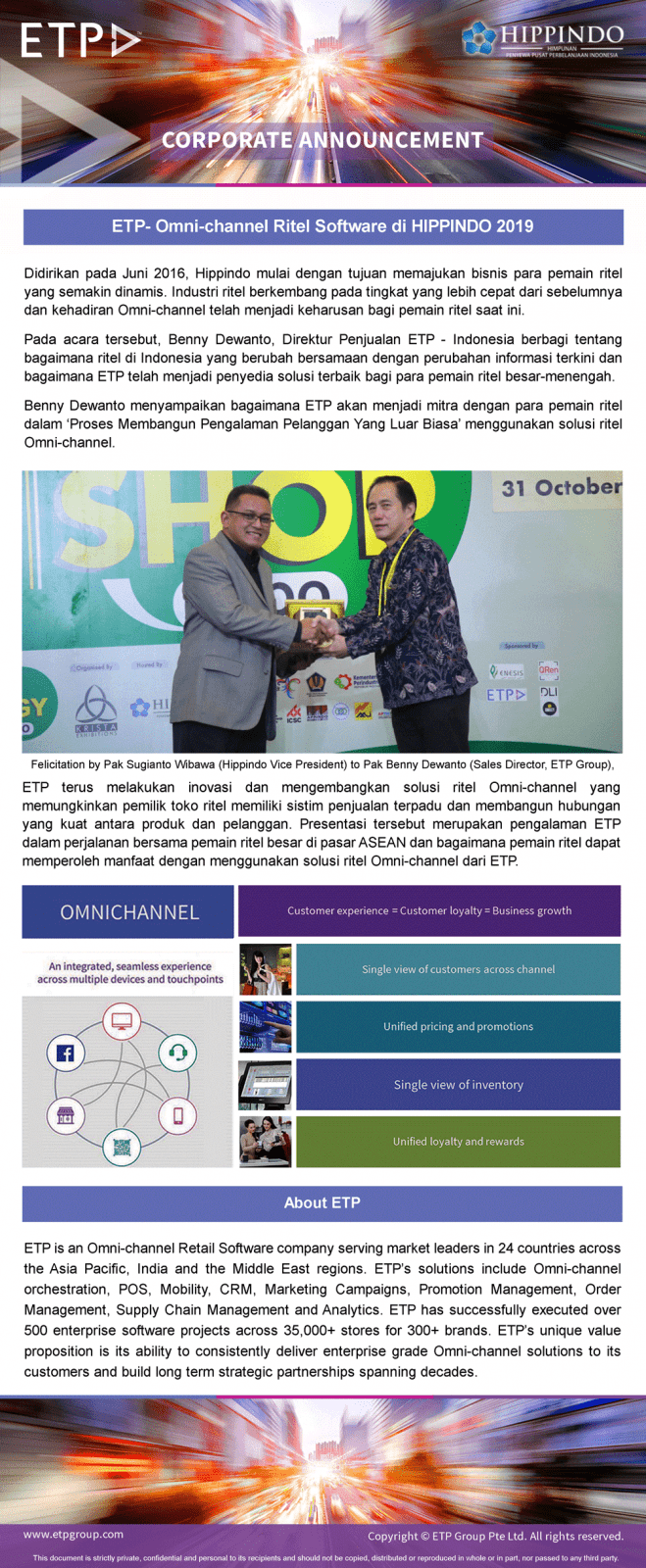
Author: admin
ETP Omni-channel Technology Partner at ReTechCon 2019
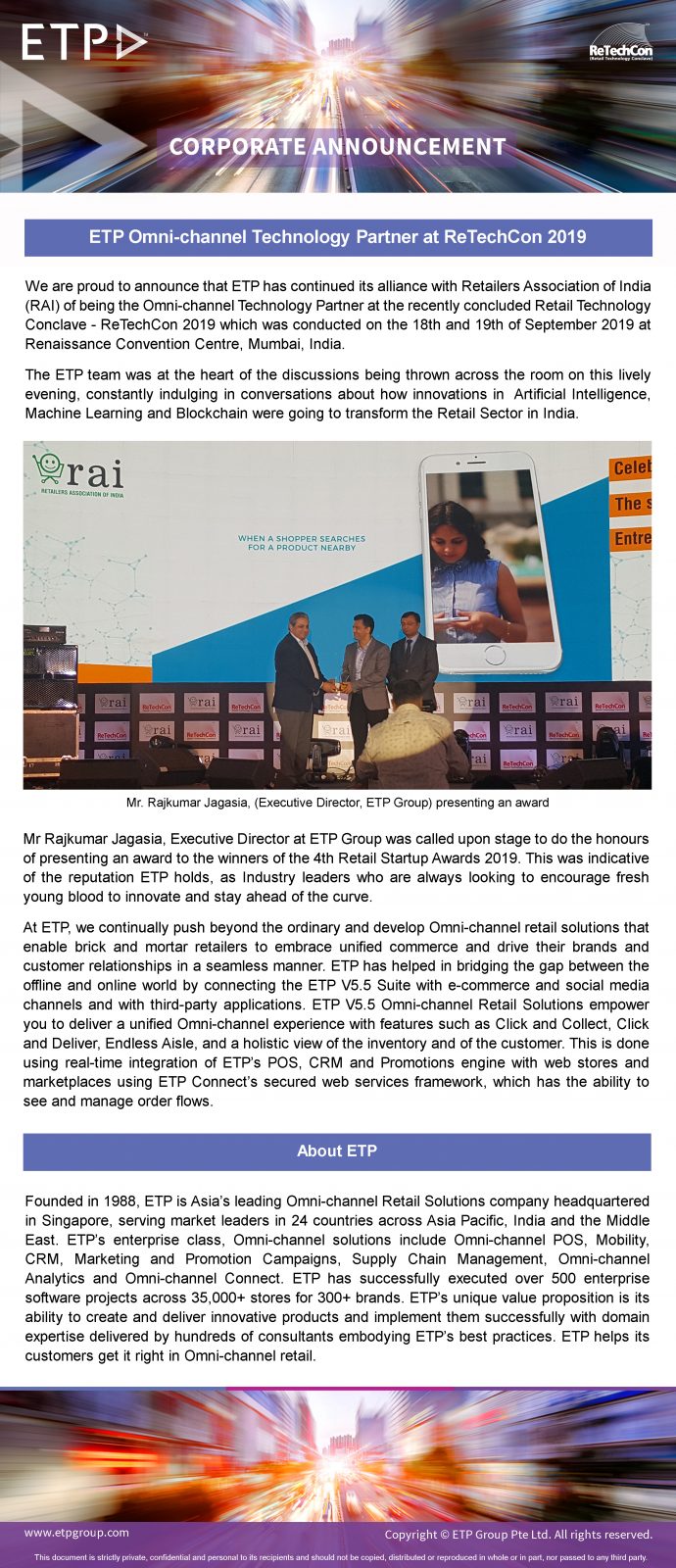
ETP #Futuretail Jakarta portrays the Omni-channel Transformation of Retail Businesses in Indonesia
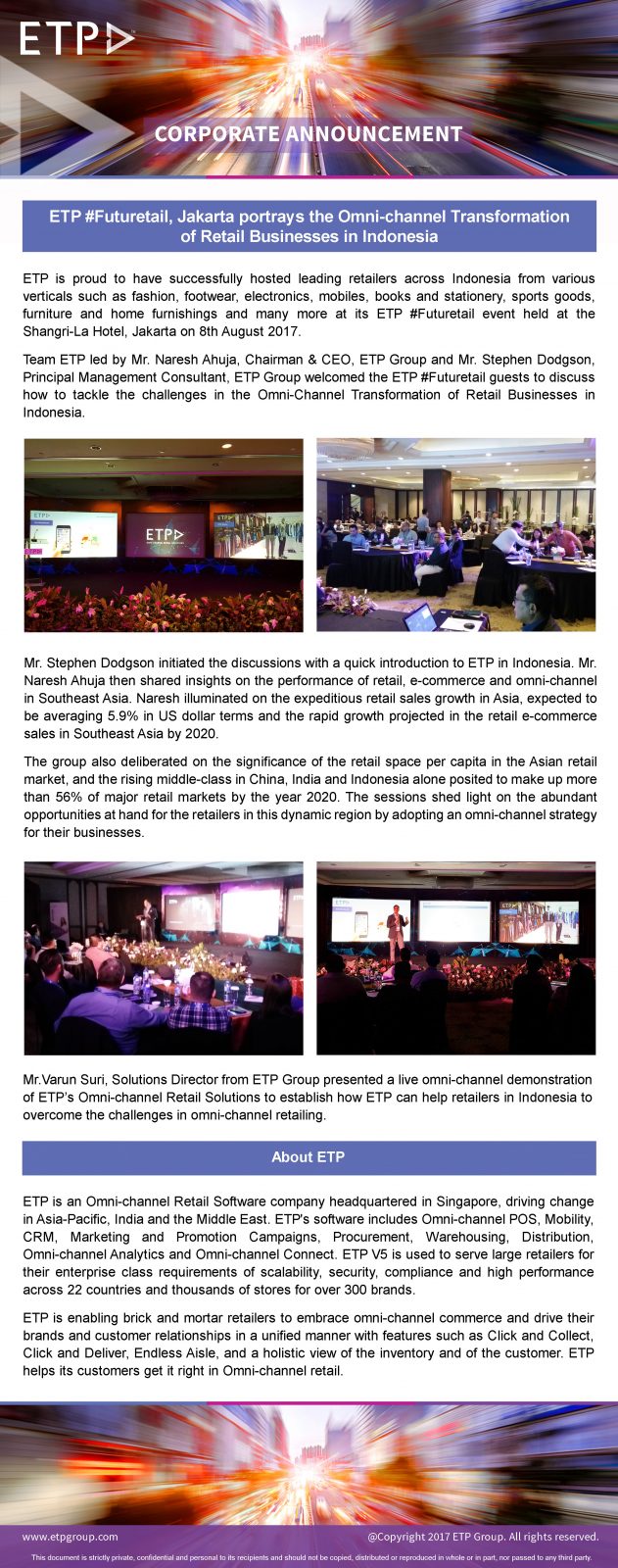
ETP Group recognized amongst the Top 20 Most Promising Retail Solution providers in India – 2017: CIO Review
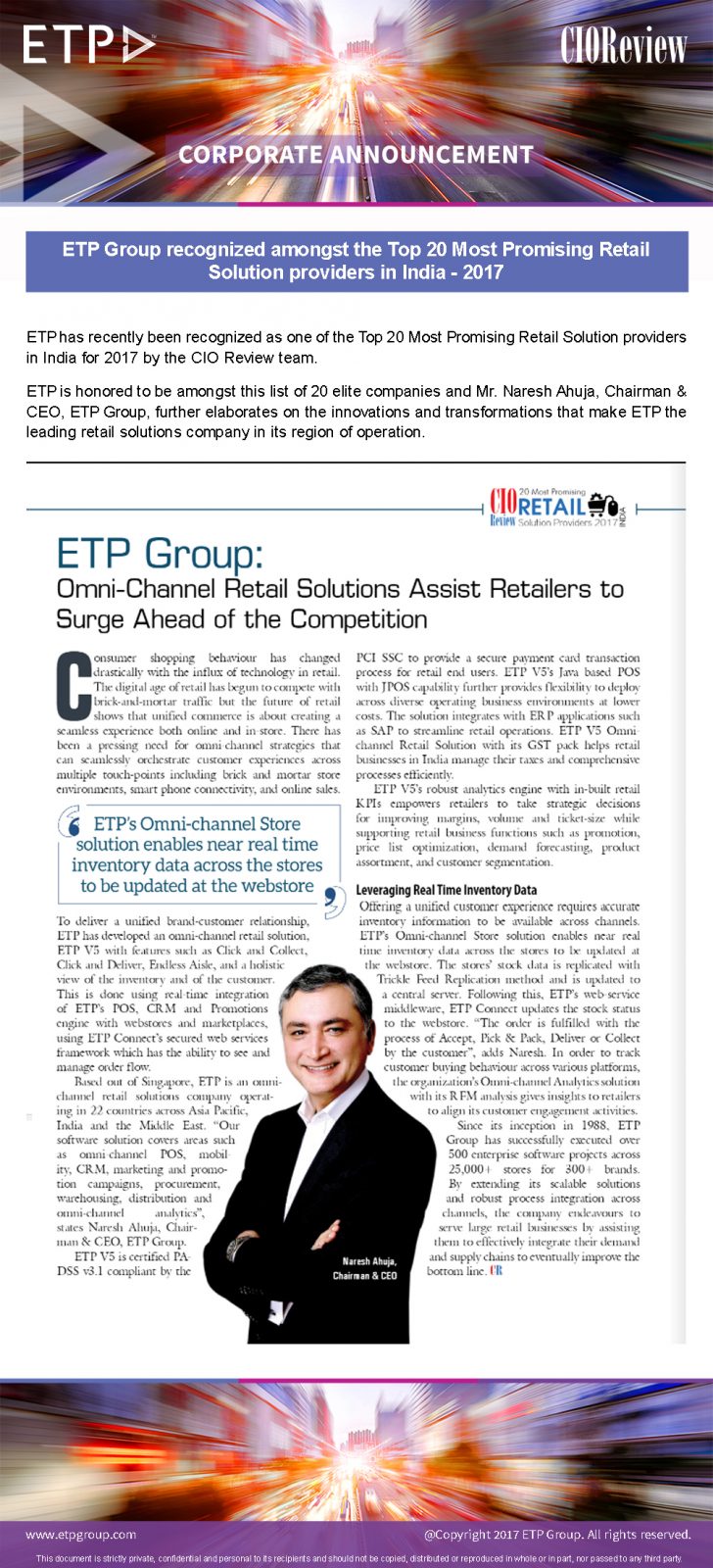
ETP Group recognized amongst the 25 Most Promising Retail Solution providers – 2017: APAC CIOOutlook
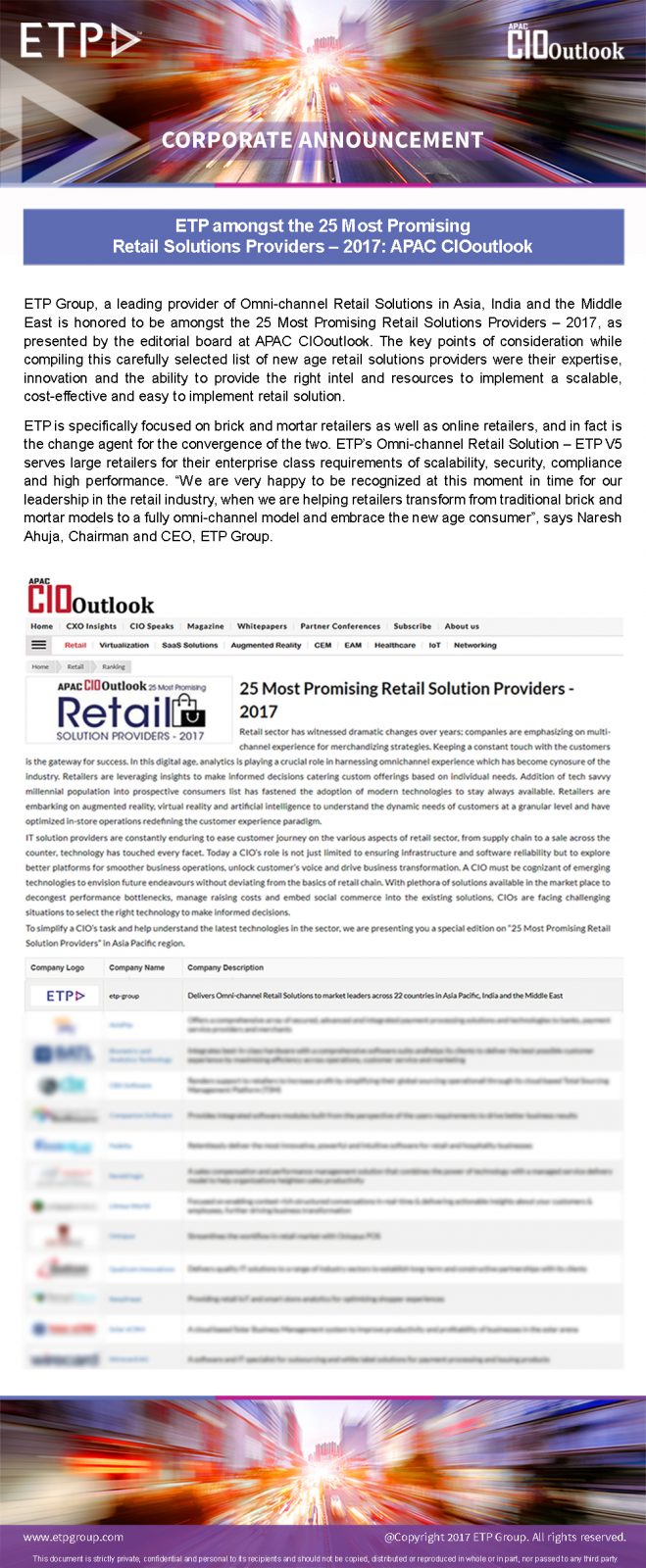
ETP enables Indian retailers with GST-ready Omni-channel Software
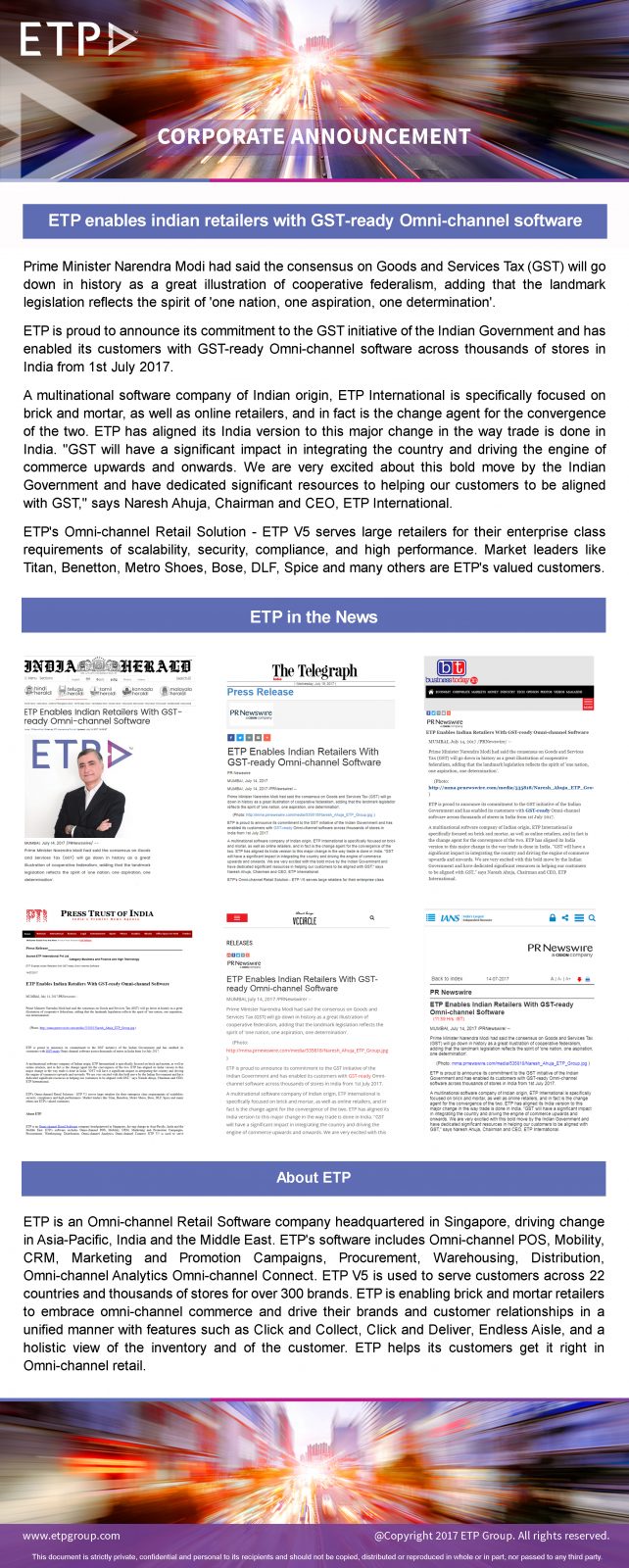
ETP – Omni-channel Technology Partner at ReTechCon 2017
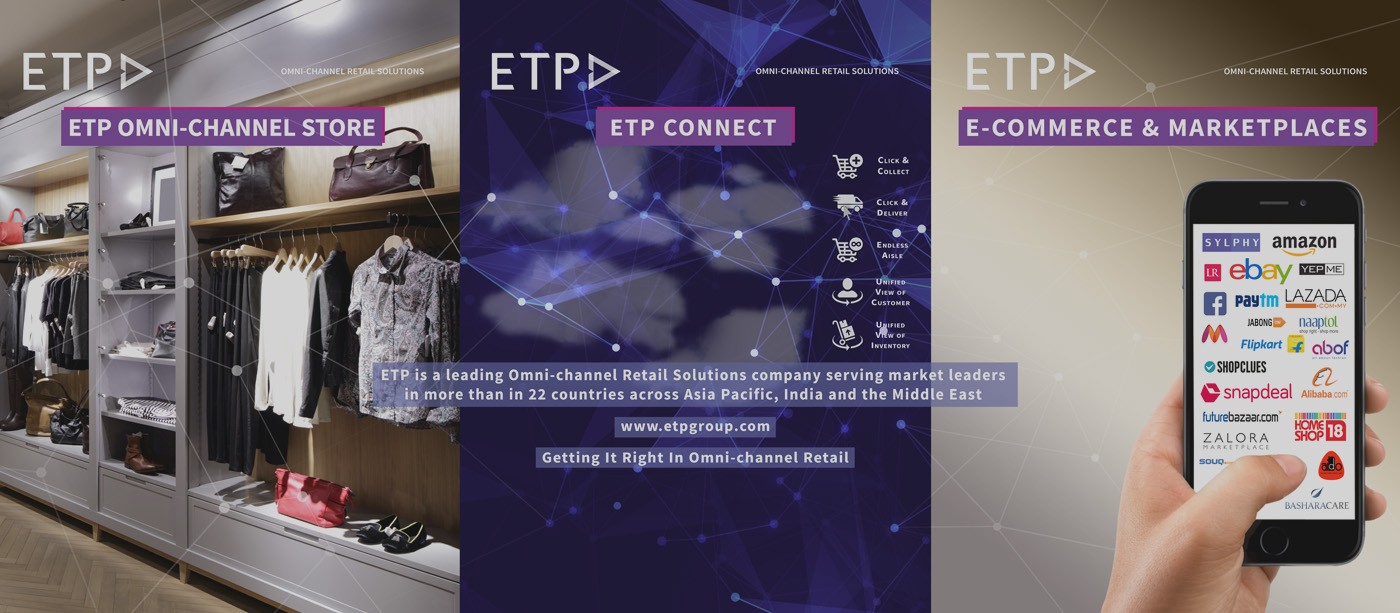
RAI is hosting the Retail Technology Conclave (ReTechCon) on 14-15 June 2017, India’s largest gathering of retail leaders and retail service providers. The platform is to bring together industry professionals, experts and service providers together for discussing the latest in technology and deliberating on how to best use technology for the benefit of the business and industry.
ETP is the Omni-channel Technology Partner at the Retail Technology Conclave (ReTechCon) 2017. ETP is a leading Omni-Channel Retail Solutions provider across Asia Pacific, India and the Middle East. ETP V5 software is used to serve customers across 22 countries and thousands of stores for over 300 brands. ETP is enabling brick and mortar retailers to embrace unified commerce and drive their brands and customer relationships in a seamless manner. ETP V5 Omni-channel Retail Solutions enable you to deliver a unified omni-channel experience with features such as Click and Collect, Click and Deliver, Endless Aisle, and a holistic view of the inventory and of the customer. This is done using real-time integration of ETP’s POS, CRM and Promotions engine with webstores and marketplaces using ETP Connect’s secured web services framework, which has the ability to see and manage order flows.
At the event Mr. Rajkumar Jagasia, Executive Director, ETP Group will co-panel the session ‘Creating Value the Phygital Way’. Mr. Neev Ahuja, Country Manager – India, ETP Group, will speak about ‘Omni-channel and the New Generation of Customers’. He will also throw light on how ETP V5 with its GST pack can help retailers manage extensive business processes.
Do visit us at the ETP Pavilion at ReTechCon 2017 to know more about how ETP can help you transform your business.
Omni-channel Challenges – Retailers need to tackle the risk
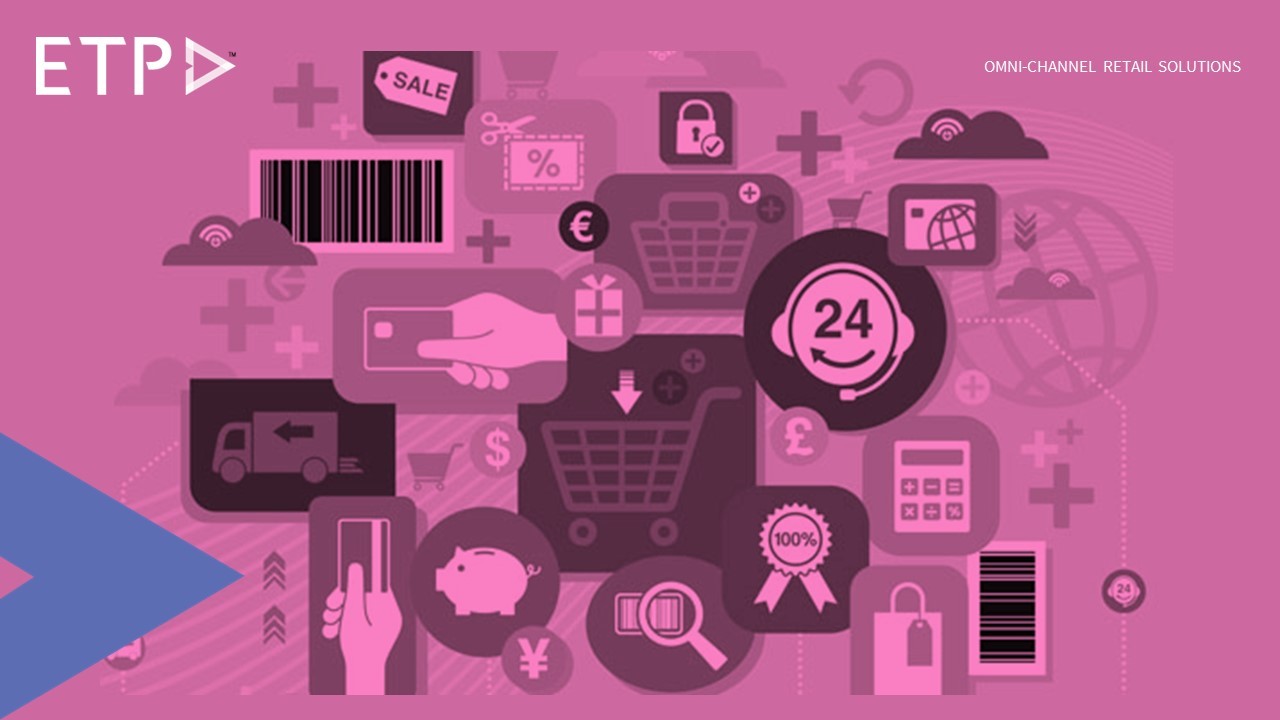
The customer is at the center of the omni-channel retail experience. The new breed of shoppers – ‘omni-channel shoppers’ are demanding and how. They want seamless shopping across channels – offline, online, mobile, and so on. They want to switch between channels at their own will. They expect hassle-free transactions. And they want all this everywhere and every time. Catering to such kind of shoppers requires retailers to reinvent their strategies when it comes to omni-channel.
Omni-channel shopping is not merely transactional, it is the composite shopping experience where a shopper researches about the product, seeks peer opinions, purchases it, chooses a delivery option followed by after sales service. This entire journey might seem pretty simple but there are challenges that could become deterrents to the seamless shopping experience retailers need to provide to their customers.
One of the main challenges that retailers need to deal with is the random switching of customers between channels during any stage of the shopping journey. So the customer might wish to research online and buy in-store or buy online and collect at the store, and so on. There are endless permutations and combinations of how the customer chooses to interact and transact with the brand. This means the brand needs to be ready and available to the customer at the desired touchpoint and time that the customer demands.
The random switching between channels by the customers can further pose additional challenges. One such being that inventory information across channels needs to be updated and available for the customer to peruse. For example, if a shopper is looking online for a particular brand and model of a mobile phone, she gets the necessary information, compares it with another competitor and finds that the deal is better at the competitor’s end, she may just decide to switch loyalty. So, a lost sale!
Another important challenge is the availability of the product when the customer wants it. The retailer needs to handle order fulfilment according to the timeframe and the channel the customer demands. Order fulfilment has been one of the major issues retailers need to get right when it comes to omni-channel. The right technology can enable retailers to manage omni-channel fulfilment to meet all customer demands.
The essence of omni-channel is unifying all channels so as to provide a seamless customer experience but the multiple touchpoints being used are posing steep challenges. There are other challenges that retailers looking to omni-channelize their business are facing, they will be delved into soon.
4 sure-shot ways to attract mobile shoppers

Mobile devices, the offspring of inspiring technology have been a revolution since their inception and continue to undergo further evolution with the daily advancement in technology. Even today, there is something new happening every year when it comes to mobile technology. The number of mobile users has also increased exponentially over the last few years. Mobile devices have penetrated into the lives of the masses and have percolated to an extent where the first thing most people do when they wake up is check their mobile phones. Such is the power and influence of this technology that it has disrupted many industries and the retail sector has been the one to feel it the most.
The mobile disruption in retail has given rise to a new breed of shoppers who are commonly known as ‘mobile shoppers’. These are the kind of customers who are always on the go and their mobile phone is their go-to device to cater to most of their activities including shopping. As mobile penetration increases further, so will the number of mobile shoppers and retail businesses must be able to grab a share of this incremental customer base. Below are 4 sure-shot ways retail brands can attract mobile shoppers:
- Mobile channel for shopping: Retail organizations must ensure proper integration of mobile commerce or m-commerce into their business. This acts as an additional channel for retailers to extend their reach as well as be available to shoppers’ on-the-go. Some ways of implementing mobile commerce would be by having a mobile friendly/responsive shopping website or downloadable mobile apps.
- Mobile engagement: Another technique by which retailers can expand their brand presence and reach larger audiences is by planning and implementing engagement strategies to cater to their mobile customers. There are various avenues that retailers can use such as mobile ads, sms, calls, and more to be on top of their customers’ and prospects’ minds.
- Mobile payments: Revolutionizing the traditional payment methods through secure mobile payments is something retail companies must certainly consider. As mobile shoppers are highly mobile savvy, allowing them to pay using their handheld devices will be much appreciated by them as it enhances the payment experience while shopping.
- Mobile based geo-marketing: Location based marketing is an excellent opportunity for retailers to promote their brands to mobile shoppers. Mobile devices have made it easy for retailers to enable shoppers to locate the nearest store or to send them notifications about the new or promotional offers within a particular region.
Consumers are increasingly spending more time on their mobile phones and an increasing number of shoppers are turning to mobile before any other channel. In order to make the most of this scenario, retailers must use the right mobile technology and think of ways to create and deliver lasting ‘mobile first’ experiences.
Redefining the Future of Retail Personalization using Artificial Intelligence
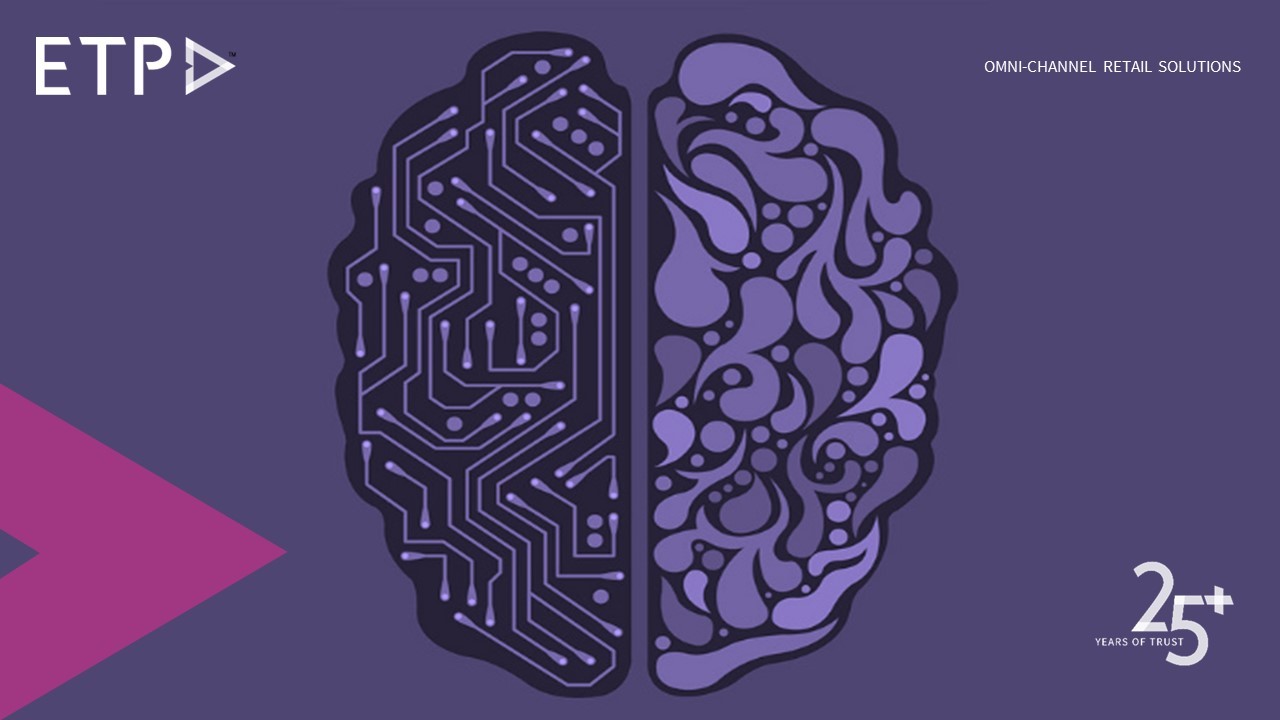
Personalization in retail is definitely not a new concept. Retailers have explored it in many ways over the years to improve shopping experience for the customers. While other retailers simply managed greeting returning customers by their name, Amazon has been one of the pioneers of personalization in retail with its ability to show different and relevant home pages for different customers based on their past clickstream paths and buying history. However, such rudimentary approaches are now considered the starting point for modern day retail marketers.
Customers are savvier than they were a few years ago. Personalization is not a need for them anymore, it is an expected norm. And retail brands must rise to the occasion to exceed this expectation. This may seem an extremely challenging task but with the proliferation of data analytics and implementation of machine learning and artificial intelligence, retail personalization can be majorly resurged.
To begin with, a very basic and brief preview into how AI works; AI uses comprehensive algorithms and logics to find trends in available data be it internal or third party and then helps analyze those trends to derive patterns that can be associated to shopping behaviors and customer personas. Utilizing machine learning that operates on probability and statistics, adjustments can be made in data sets to achieve the best outcome when it comes to creating the right marketing message for each individual customer.
Application of AI driven process in retail marketing and promotion campaigns will not only help retailers acquire new customers, but also boost repeat business. Increased accuracy in personalized communication to the customers along with tailored recommendations and offers will compel shoppers to strengthen their loyalty as they will begin to associate the retail brand with personalized, relevant experiences.
For retail personalization, the future seems to be pretty exciting. Leveraging the potential of Artificial Intelligence, there are limitless possibilities to notch up personalization to levels beyond the imagination of the customer. Infusing AI in marketing will be the differentiating factor for retail marketers that look to stand out from the horde of advertising and marketing communication targeting shoppers.

